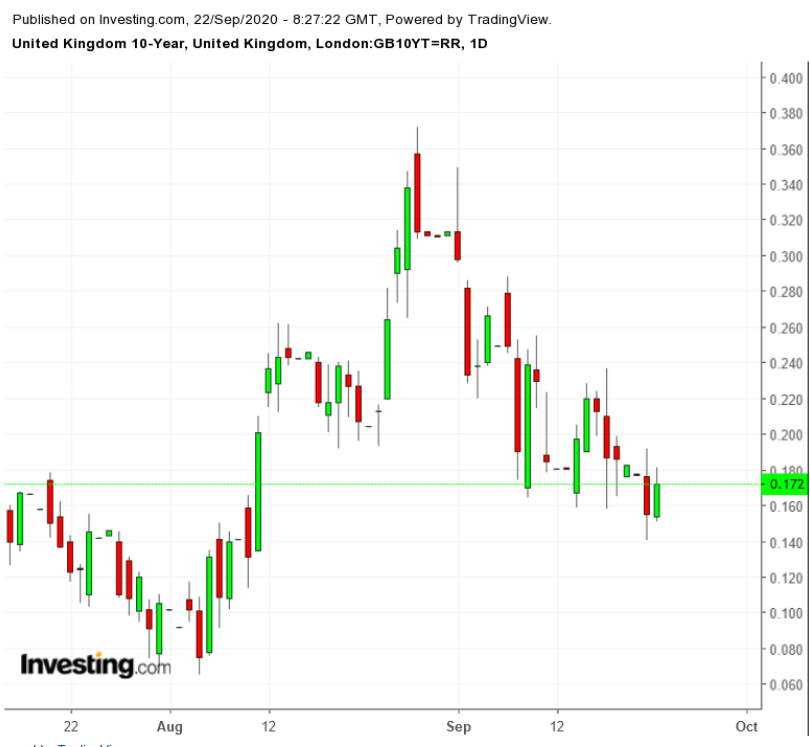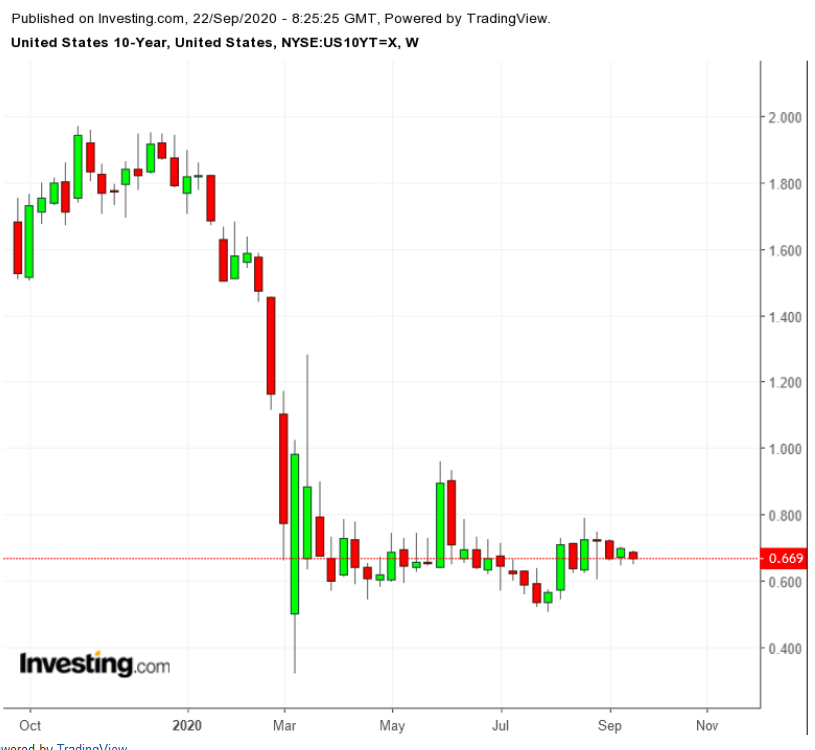Investors are understandably jumpy amid the current uncertainty about virtually everything. So a short paragraph in the minutes from the Bank of England’s policy meeting last week blindsided markets.
The UK central bank raised the possibility of negative interest rates after officials had pooh-poohed the idea for months.
According to the minutes, the Monetary Policy Committee:
“...had been briefed on the Bank of England’s plans to explore how a negative bank rate could be implemented effectively, should the outlook for inflation and output warrant it.”
As the UK prepares to re-imposes some restrictions against COVID-19 and debates a return to lockdown, it sure looks like circumstances could warrant negative rates if the bank wants to ease monetary policy further from its current 0.1% benchmark rate.
BoE Surprise Follows Fed Lead
Sterling took a dive on the comments and yields on UK government bonds declined as gilts staged a rally (bond yields move inversely to prices).

The 10-year bond yield slipped 2 basis points by Monday as market participants waited for a scheduled speech by Bank of England governor Andrew Bailey on Tuesday to see if he would clarify the bank’s view on negative rates.
The rally in gilts supported the prices of eurozone government bonds as well. The Italian 10-year bond yield, which had been coasting below 1% since the Fed’s announcement, dropped even further, touching near 0.9% on Monday before bouncing back a couple of basis points.
Exit polls indicated that Italy’s center-left alliance had maintained the hold on its fiefdom in Tuscany, as opinion polls ahead of the regional vote Sunday and Monday made the election too close to call. The loss of the heartland region could have destabilized the coalition government of the Democratic Party and Five Star Movement in Rome.
The surprise from the Bank of England Thursday came after the US Federal Reserve delivered on its pledge Wednesday to keep rates low, extending its time horizon to 2023 with a forecast that the benchmark rate would remain at near zero until the end of that year.
Treasury yields bounced around as investors digested that prospect, trying to balance a carte blanche to seek out riskier securities with the inherently pessimistic view behind that forecast.

By Monday, worries about the pandemic seemed to predominate, and the 10-year Treasury note declined 3 bps to 0.66% as the possibility of a renewed lockdown in London prompted investors to opt for a safe haven, exiting from stocks and moving into Treasuries.
The dithering in the US Congress over a further fiscal stimulus has been overtaken by the debate over a Supreme Court appointment after Justice Ruth Bader Ginsburg died on Friday after a long battle with cancer.
Fed Chair Jerome Powell had little to add to the equation in his prepared remarks for a hearing Tuesday before the House Financial Services Committee to testify about the Fed’s response to the pandemic.
However, timing is everything and his reiteration of the belief that “a full recovery is likely to come only when people are confident that it is safe to reengage in a broad range of activities” reminds us that moment, clearly, has not yet come.
